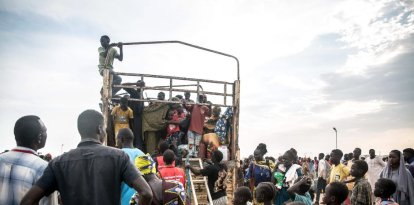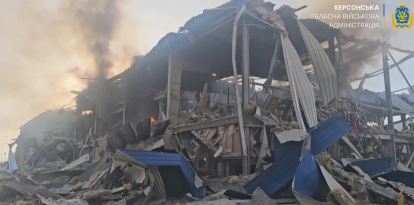The horrors of Saydnaya under the Assad regime: Execution and death by disease in Syria's most infamous prison
After the rebel takeover and public access to the prison, Syrians now search for their loved ones in the same place where dozens of people were hanged daily.

A cell in Saydnaya prison.
After years of silence and repression under Bashar Assad's regime, Syrians have begun an anguished search for their loved ones missing in Saydnaya, the country's most infamous prison. This effort began after the fall of the regime, when the armed group Hayat Tahrir al-Sham (HTS) took control of the compound, released detainees and allowed public access.
In recent days, rescue teams, lawyers, civilians and militiamen have thoroughly inspected the prison and reviewed documents and lists of detainees. Excavations have even been carried out in search of human remains in the hope of finding clues to the whereabouts of thousands of people who disappeared under the Assad regime.
A place marked by systematic abuses
For years, Saydnaya was controlled by the Asad regime's military forces, becoming an emblem of state brutality. In 2017, a report by Amnesty International revealed that some 50 people were executed daily by hanging in the prison facility. These harrowing figures illustrate the scale of abuses perpetrated as part of a vast network of arbitrary arrests, torture and enforced disappearances. In total, tens of thousands of people disappeared in a system that systematically orchestrated repression.
With the fall of the regime, rebel groups took control of Saydnaya, allowing Syrians, for the first time, to access the site in search of answers about the fate of their loved ones. However, Ammar al-Bara, a lawyer who has received countless requests from desperate families, warned that 99% of the missing were likely to have been executed or died due to disease.
A legacy of repression
Saydnaya, the infamous Syrian prison, housed between 10,000 and 20,000 detainees, according to Amnesty International estimates. Over the years, it became the cruelest symbol of the regime's repressive practices. Its notoriety increased after a prisoner riot in 2008, which led to a dramatic increase in the use of torture and extreme violence. Detainees, most of them political opponents, activists and arbitrarily detained civilians, were subjected to inhumane conditions, including beatings, deprivation of food and water, and methods of psychological and physical torture.
Today, hospitals and morgues in Damascus have become gathering points for relatives seeking to identify bodies recovered from Saydnaya.
The prisons of Bashar Assad's regime, along with the use of chemical weapons and bombings against rebel-held areas, have become global symbols of his brutality. These abuses led several countries to reject any diplomatic rapprochement with his regime. The conflict in Syria left hundreds of thousands dead and forced more than 12 million people to flee their homes, generating one of the worst humanitarian crises in the region.
RECOMMENDATION





















